#calopteron
Explore tagged Tumblr posts
Text

a trio of banded net-winged beetles (Calopteron reticulatum or C. discrepans) engaged in some sort of indescribable debauchery
net-winged beetles (Lycidae) are one of several families closely related to fireflies, but while most members of this group are carnivorous as larvae, those of lycids feed on slime molds and fungi.
(Massachusetts, 8/11/23)
#beetles#lycidae#net-winged beetles#calopteron#calopteron reticulatum#coleoptera#bugblr#bugs#insects#entomology
329 notes
·
View notes
Text
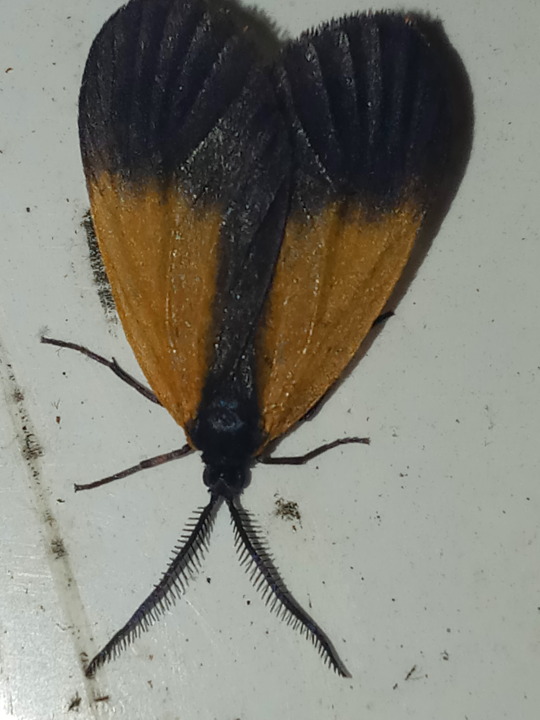
[PHOTO TAKEN: MAY 30TH, 2023 | Image ID: A black-and-yellow lichen moth, a black moth with yellow/orange markings on its wings, on a dirty white metal surface /End ID.]
I almost had this guy (Lycomorpha pholus) confused for an end band net-wing beetle (Calopteron terminale)! Which makes sense, given they're thought to mimic lycid beetles-
#Moths#Moth#erebidae#hymenoptera#insects#insect#bugs#bug#bugblr#entomology#arthropods#invertebrate#photos#photo#Wasp House Sights
24 notes
·
View notes
Text



other bugs from today: a Minettia fly, Calopteron netwing, and some poor larva and its happy bunch of parasitic wasps.



found a Pale Beauty (Campaea perlata) today! flip a leaf, find a bug
469 notes
·
View notes
Text

@emo-mothman submitted: A Banded Net-Winged Beetle, I think. I love them.
It is indeed! I love them too :)
74 notes
·
View notes
Text


11/8/19
0 notes
Photo
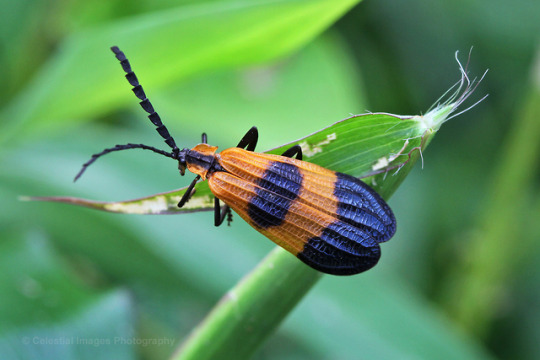
Banded net-wing beetle (Calopteron reticulatum)
August 29, 2019
Southeastern Pennsylvania
#bug#bugs#photographers on tumblr#Calopteron reticulatum#beetle#beetles#Coleoptera#banded net wing#insect#insects#bugblr#entomology
110 notes
·
View notes
Video
Net-winged beetle, Calopteron sp., Lycidae by Andreas Kay Via Flickr: from Ecuador: www.youtube.com/AndreasKay
19 notes
·
View notes
Photo
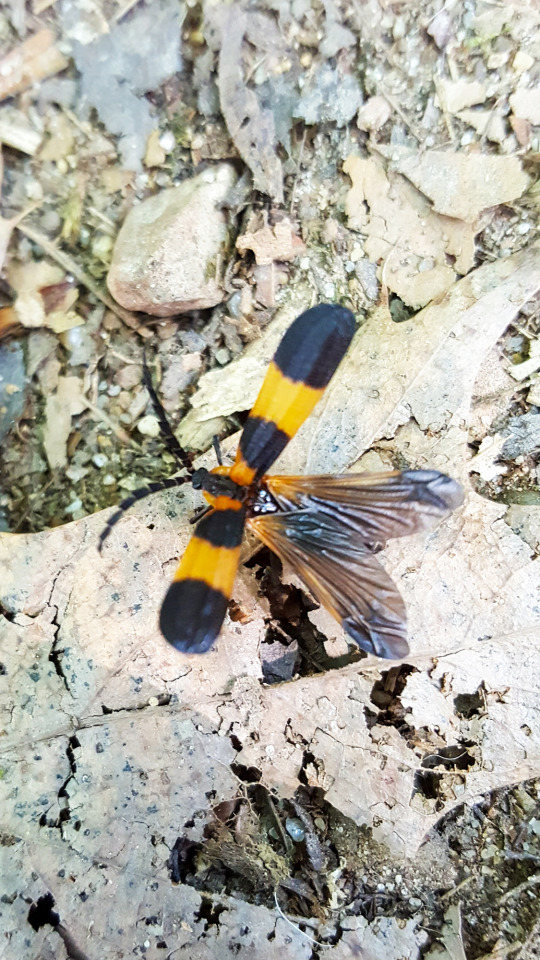

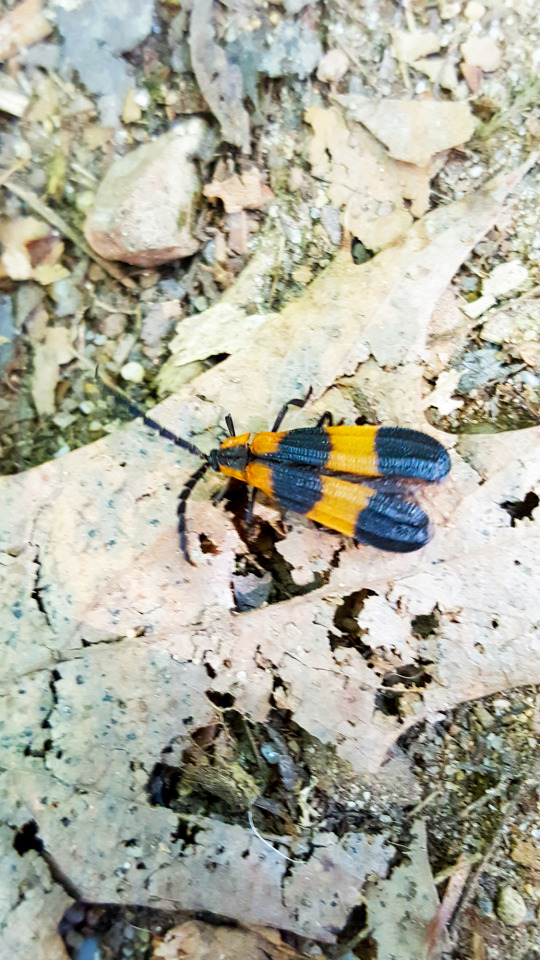
[8/7/20] Banded Net-winged Beetle, Calopteron reticulatum.
A very pretty friend shows off their lovely wings.
#insect#insects#beetle#beetles#banded net winged beetle#outdesign posts things#insect catalog#just landed right in front of me and then took off again
45 notes
·
View notes
Photo
i am a real scientist and while i don't specialize on trilobite beetles, i was able to dig up a fairly authoritative paper (PDF link) on them that discusses the current research on the feeding habits of larval trilobite beetles, which would most likely be the same as that of the neotenous females. there are some anecdotal observations of the larvae of some species feeding on gastropods or fly larvae, but the preponderance of evidence points towards them feeding on the microorganisms living in rotten log juice:
In conclusion, with evidence from gut contents and anatomy, together with observations of feeding behaviour, the female larva of Duliticola hoiseni does indeed feed on micro-fauna associated with the juices of rotting wood.
Lycidae larvae have the characteristic feature of mandibles which are divided longitudinally into two parts. Boving & Craighead (1931) provided figures of the two part-mandibles of Eros humeralis and Calopteron reticulatum. McCabe & Johnson (1979) noted that "the larval mandibles of Platycis sculptilis are fused at the base and incapable of apposition, seemingly eliminating the possibilty of any predatory habits.
note that there are many species of trilobite beetle so the authors of the paper caution against making any strong generalizations about the whole group, but cannibalism or predation of other adult arthropods seems very unlikely
i mean look at this. this is not the face of a fierce predator

for anyone who wants a more detailed explanation but doesn't want to download the pdf, i'll include the full text of that section under the cut
Feeding Behaviour and Diet. - The feeding biology of Lycidae larvae has not been fully understood nor well documented. Shelford (1916: 166) described the feeding behaviour of Lycostomus larva and suggested that they were preying on either "mollusca, ... and perhaps dipterous larvae". Subsequently, following the observations of McCabe & Johnson (1979), who reported the larva of Platycis sculptilis (Say) feeding on decaying juices of rotting White Pine (Pinus strobus) wood. More recent work by Miller (1988) who observed Calopteron reticulatum feeding on mollusks, suggested that at least some lycid larvae are indeed predatory in nature. As such, we are still at too early a stage to make generalizations about the food sources of larvae of Lycidae.
There had been considerable speculation and confusion over the food source of trilobite larvae; whether they are predators or feed on fungi, slime mould, or suck juices from rotting wood. Gahan (1913: 62) remarked that "on no occasion have I been able to see them feed; and it is still doubtful whether their food be vegetable or animal matter". Gravely (1915: 363) suggested that "presumably therefore they must eat something which they need not grasp securely, such as snails or planarians. It is also possible that they may feed on the juices of decaying wood, etc."
Mjoberg (1925: 140) stated more conclusively that they "feed on the juices of decaying wood." This was justified from gut contents and direct observations. Ng & Yong (1991: 95) "found specimens on fungi (Basidiomycetes), observed some of them apparently grazing on the fungal growths on rotting wood".
Observations of feeding behaviour, both in the field and in captivity, were made by the author. Larvae can be seen moving on the surface of fallen logs with the head and antennae (Figs. 5A, 5B) extended. From time to time, the animal would lower its head and probe the surface with its antennae. The antennae may be serving a sensory function in which the texture or the dampness of the wood may be assessed. Individuals have been observed with their heads and mouthparts jammed into crevices apparently in the act of feeding. Similar feeding actions were observed in animals left on wet tissue papers.
A drop of liquid was squeezed from a piece of wood collected together with D. hoiseni larvae, and observed under the microscope. A large amount of organic detritus in the form of wood fibres, fungal hyphae and spores can be seen. In addition, a wide spectrum of living organisms exists in the juice; these include protozoa, rotifers, nematode worms, copepods and nauplii larvae, and mites. Presumably, the larvae were feeding on the micro-organisms within the juices of rotting wood.
Gut morphology and contents of D. hoiseni larvae were examined. Specimens were dissected and the digestive tract removed. Gut contents within each part of the gut were examined.
The gut is of a simple tubular form (see Fig. 3D), coiled in the hindgut portion. The foregut is thin walled such that the clear, brown fluid content is visible. This fluid is similar to juices extracted from rotting wood. In freshly dissected specimens, the fluid can be seen to be pulsating back and forth. This is due to the pumping action of the midgut which has thick muscular walls. The contents of the midgut appears to be the same brown fluid. The hindgut is thin-walled and coiled, while the rectum is a short, straight thin-walled section. Within the hindgut, a light brown, soft solid substance is present. The contents of the hindgut is similar to the material excreted by the larvae. The body cavity, both in the thoracic and abdominal portions, was full of white fat bodies; and as the larvae were in captivity for several months, this indicates that the larvae had been feeding consistently.
In conclusion, with evidence from gut contents and anatomy, together with observations of feeding behaviour, the female larva of Duliticola hoiseni does indeed feed on micro-fauna associated with the juices of rotting wood.
Lycidae larvae have the characteristic feature of mandibles which are divided longitudinally into two parts. Boving & Craighead (1931) provided figures of the two part-mandibles of Eros humeralis and Calopteron reticulatum. McCabe & Johnson (1979) noted that "the larval mandibles of Platycis sculptilis are fused at the base and incapable of apposition, seemingly eliminating the possibilty of any predatory habits. Crowson (1981: 129) referred to "extraordinary modifications are seen in Lycidae where each mandible is split into two nearly straight pointed sclerites which together enclose a suctorial tube ... ".
Specimens of mandibles were observed under the Scanning Electron Microscope at low KV values and at magnifications of between lOOX and 350X (see Figs. 6C, 6D). The mandibles are diametrically opposite, sharp, sickle shaped, and dorso-ventrally flattened. Each mandible is made up of two separate parts which are tightly fitted together. The inner part, M2, is deeply grooved along the midline; and it is along this groove that the outer part, MI, fits.

Trilobite beetles
#coleoptera#trilobite beetles#lycidae#long post#bflys science corner#also yeah as far as i know nobody's been able to raise these in captivity#and many people have tried
10K notes
·
View notes
Photo

Mating pair of End Band Net-wing Beetles (Calopteron terminale) August 21, 2013
0 notes
Photo

Net Winged Beetle
Calopteron sp.
Month: July
0 notes
Photo

Banded Net-Winged Beetle (Calopteron discrepens) #insect #beetle #arkansas (at C and J Sports)
0 notes
Photo

Banded Net-winged beetle (Calopteron reticulatum), Newark DE. August 2017.
Larvae of this species tend to show up in clusters, due to females laying eggs in the same site in moist woodlands. Larva are predators that eat other arthropods that scurry around in the undergrowth or under the bark of rotting logs, although they are not against eating slime molds and fungi if food is plentiful. As adults, they take to nectar from flowers, and many can be seen on forest edges or fields. The orange and black coloration are believed to signal to predators that the insects are toxic. One generation in the eastern US, with adults common by late summer. Larvae pupate in the bark during the summer, eggs overwinter.
12 notes
·
View notes
Text

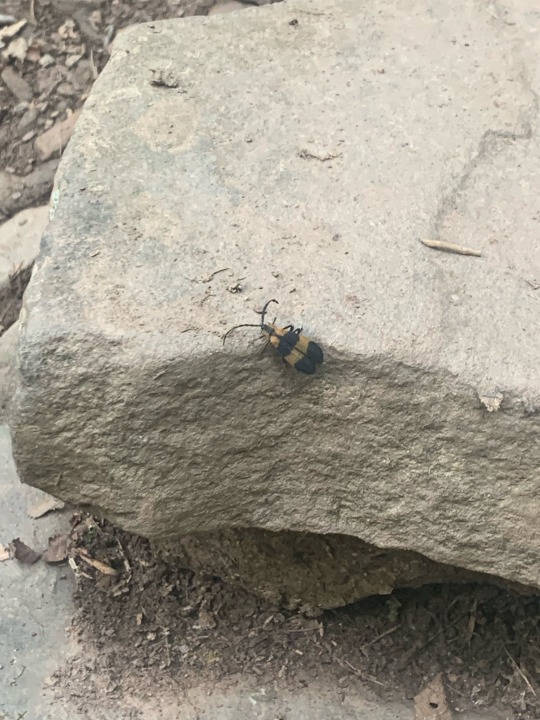

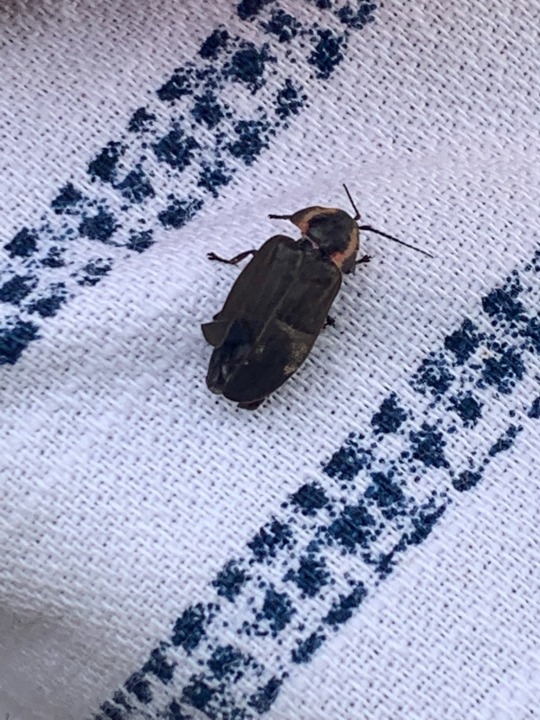

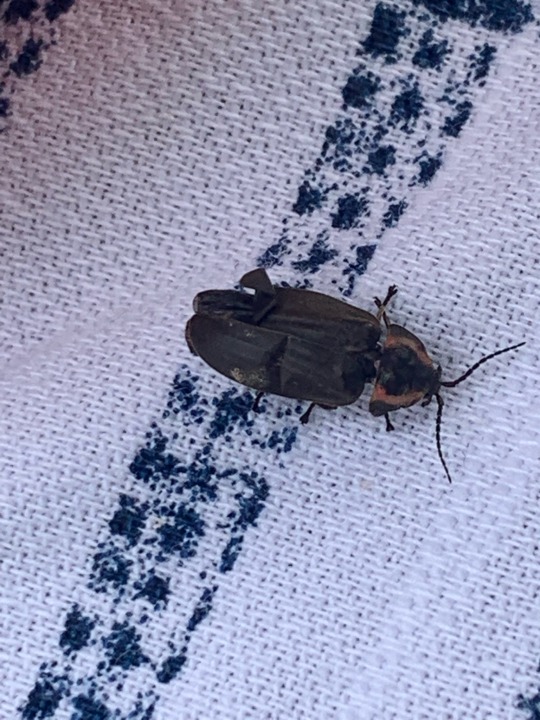
@my-whole-brain-is-crying submitted: these three bugs are all from pennsylvania if you could please id them. the last one is injured sadly, it's wing is bent
Suuure. The first dude is a mayfly but it's not clear enough to really tell you which one. The first beetle is a net-winged beetle in the genus Calopteron, likely C. reticulatum, I think. The injured friend looks like a winter firefly, Ellychnia corrusca :)
#insects#bugs#submission#animals#mayfly#beetle#net winged beetle#reticulated net winged beetle#firefly beetle#winter firefly#injured bug
47 notes
·
View notes
Photo

Bug of the Day
Beautiful banded net-wing beetle (Calopteron reticulatum) on a burning bush that sprouted up in my back yard.
#Calopteron reticulatum#Calopteron#Banded Net-wing beetle#net-wing beetle#Lycidae#Coleoptera#beetle#insect
73 notes
·
View notes
Text

8/19/21
1 note
·
View note
